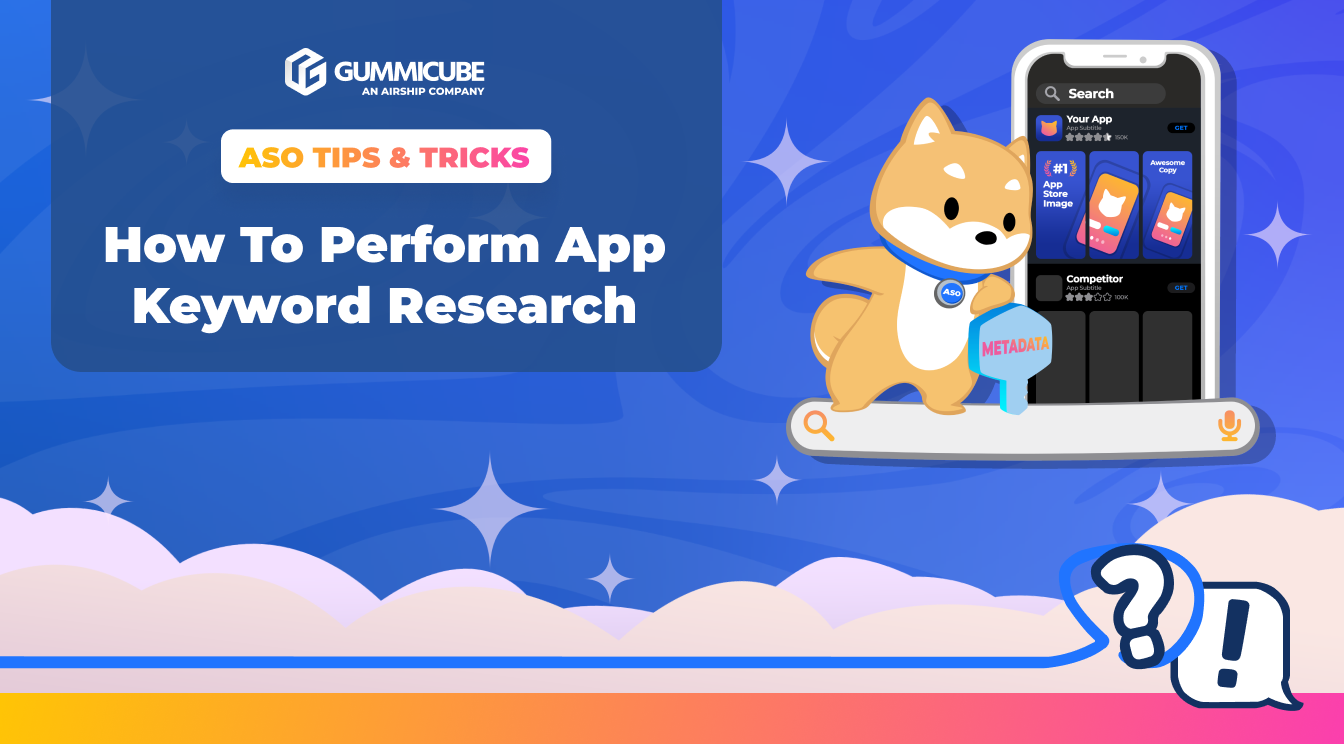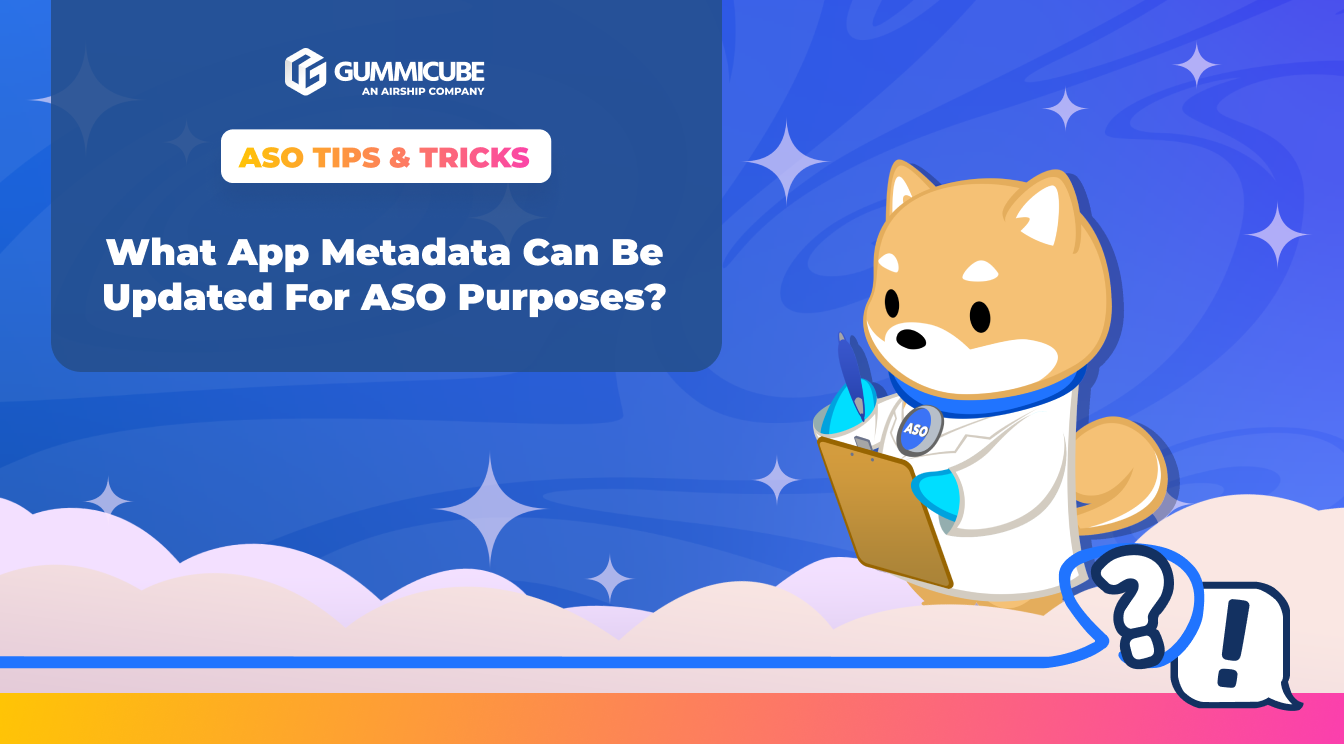
What To Do If Your In-App Event Gets Rejected
Posted on December 19th, 2025
By evaluating the feedback from a rejected In-App Event, app developers can resubmit and gain approval. If you are looking to refine your IAE, reach out today.

How to Create a Target Audience for App Store Optimization
In the world of app store optimization (ASO), understanding your audience isn’t just helpful—it’s essential. Knowing exactly who your app serves allows you to fine-tune every element, from keywords to visuals, for maximum impact. Crafting a well-defined target audience is more than a foundational step; it’s the key to gaining visibility in a crowded app marketplace and capturing attention where it matters most. With so many apps vying for user engagement, defining your ideal user can mean the difference between being overlooked and standing out as a must-have.
When your ASO strategy is aligned with the specific needs, desires, and motivations of your ideal users, you’re equipped to create a compelling app experience that’s far more likely to resonate. As we explore how to create a target audience for ASO, we’ll delve into practical steps to help you not only identify this audience but strategically position your app to meet their needs and exceed their expectations.
A target audience represents the group of users who are most likely to download and engage with your app in a meaningful way. In ASO, focusing on a well-defined target audience allows for a precise and intentional approach to optimizing your app listing. This approach helps you attract the users who will truly benefit from and find value in your app’s unique offerings.
Defining a target audience enables you to connect with users on a personal level, making your app feel relevant and intentional. This connection results in increased downloads, higher engagement, and greater loyalty among users, as they feel understood and valued. For app developers and marketers, this clarity can lead to significant advantages:
These advantages demonstrate that defining a target audience isn’t just a strategic advantage—it’s a necessity in achieving lasting success in the app store.
Identifying a target audience begins with thorough research. It’s essential to move beyond assumptions and gather real insights that reveal your ideal users’ true preferences, behaviors, and challenges.
Surveys are one of the most effective ways to gather insights directly from your potential audience, especially when you're in the initial stages of app development or exploring new features. By crafting a series of targeted questions—ranging from user preferences and lifestyle habits to specific needs related to your app concept or functionality—you gain valuable data that helps shape your ASO efforts with precision.
This feedback provides concrete insights into how users perceive the app’s purpose, their challenges, and expectations, ultimately guiding decisions on app descriptions, visuals, and messaging to better align with user priorities. Whether you’re testing the app concept itself or refining features based on direct responses, surveys create a data-informed foundation for building an app experience that resonates.
User reviews on competitor apps offer a wealth of information about what users appreciate and what frustrates them. Observing these reviews helps you identify patterns, pinpoint features to highlight, and uncover areas where competitors may be falling short. This information is invaluable in shaping how you position your app to fill these gaps and provide a better experience, giving you an edge in reaching users looking for improvements.
Competitor analysis extends beyond the app store. Observing how competitors engage with their audience on social media can reveal key demographics, common interests, and behavior patterns. Additionally, analyzing competitor strengths and weaknesses provides you with a clearer understanding of how to differentiate your app and position it uniquely. Each insight gathered through social media and competitor analysis strengthens your ability to attract your ideal users.
By conducting this research, you’ll build a strong foundation of knowledge, enabling you to create an ASO strategy that speaks directly to the right users, increasing your app’s chances of success.
After gathering research, the next step is creating audience personas. A persona is a detailed profile that embodies a segment of your target audience. It allows you to shape your ASO strategy with a user-focused lens, guiding how you tailor keywords, descriptions, and visuals.
To craft a comprehensive persona, start with demographic details such as age, gender, location, and occupation. Knowing the core demographic of your ideal users allows you to develop a consistent, relatable message that resonates with specific characteristics and needs. With a clear demographic outline, your app’s tone and messaging can directly reflect the lifestyle and expectations of your target audience.
Beyond demographics, psychographics such as user interests, motivations, and behaviors offer deeper insights. This information helps align your app’s branding and visuals to appeal to the unique characteristics of each persona. For instance, if efficiency is highly valued among your target audience, it’s essential that your ASO strategy emphasizes the time-saving aspects of your app.
Finally, by understanding user pain points and goals, you can communicate how your app provides solutions. Speaking directly to these needs in the app description allows users to recognize your app as an ideal fit for their specific objectives, creating a stronger connection from the start.
When you’ve built detailed personas, you’re well-equipped to create an ASO strategy that’s precise, user-centered, and more likely to drive meaningful engagement.
Once you’ve defined your audience, the next step is to align your app’s metadata for the Apple Store or Google Play —title, description, keywords, and visuals—to directly reflect your audience’s needs and preferences. Each of these elements serves as an opportunity to connect with users and persuade them to download.
The title and description are powerful spaces for reaching your audience. By integrating keywords that match their search behaviors, you increase your app’s relevance in the app stores. Thoughtfully worded titles and descriptions communicate directly to user pain points and interests, helping you craft a compelling narrative that encourages downloads. Highlighting specific benefits and features within the description reinforces that your app is tailored to their needs.
A strategic keyword approach ensures that your app appears in relevant search results. Use keywords that align with user needs and preferences, keeping an eye on trending terms that could strengthen your app’s visibility. A regularly updated keyword list will keep your app aligned with evolving audience interests, allowing you to capture new users who are actively searching for your app’s features.
Visuals like screenshots, preview videos, and icons are essential in making a lasting first impression. Each visual should convey your app’s value clearly, reflecting the lifestyle and expectations of your target audience. Consistent A/B testing on visuals will help refine your approach and ensure that your app is showcased in the best light, strengthening the visual appeal for potential users.
Localization When your app has a global reach, localization is key. Tailoring metadata to align with cultural preferences, language nuances, and specific interests enhances relevance, allowing your app to make a strong impression across diverse audiences.
Defining a target audience is only the beginning; consistent engagement is crucial for maintaining interest and loyalty among users. Proactively engaging with users ensures that your app remains relevant, trustworthy, and aligned with their evolving needs.
User reviews offer a continuous feedback loop, highlighting what resonates with your audience and what could be improved. Encouraging users to leave feedback and responding to reviews demonstrates a commitment to quality, which builds user trust and enhances your app’s appeal. Addressing user suggestions in updates shows responsiveness and helps retain users within your target audience.
Social proof, such as user testimonials, positive ratings, and success stories, establishes credibility. By highlighting real user experiences, you create a sense of community and connection, making new users more likely to engage with your app. Social proof reinforces that your app is both valuable and well-suited to the needs of its users.
Regular app updates reflect an understanding of user priorities, showing that your app continues to evolve. Updating your app to include new features, improvements, and bug fixes based on user feedback enhances functionality and engagement. Clearly explaining each update’s benefits demonstrates transparency and commitment, helping to retain your audience’s interest.
Crafting a target audience is the backbone of a successful ASO strategy. With a clear understanding of your ideal users, you’re better positioned to create an app experience that resonates on a deeper level, increasing both visibility and engagement. From detailed research to building personas, each step in defining your audience helps shape an app that not only attracts attention but builds a community of loyal users who find real value in its features. By aligning your metadata and visuals with audience needs, you enhance your app’s relevance, making it a strong contender in a competitive marketplace. Consistent engagement through feedback, social proof, and app updates that cater to evolving user interests further solidifies your app's presence, fostering trust and long-term user satisfaction. As you refine your approach over time, your app’s alignment with your audience’s priorities will drive sustainable growth, allowing it to thrive amid the ever-evolving landscape of the app store.
Building a strong ASO strategy that resonates with your target audience is a journey, and sometimes a bit of expert insight can make all the difference. Whether you’re refining audience personas, optimizing metadata, or looking to test new strategies, our team is here to guide you every step of the way.
If you’re ready to elevate your ASO strategy and dive deeper into audience-focused optimizations, let’s chat! Our team is always happy to explore your app’s potential and discuss solutions tailored to your unique goals.

By evaluating the feedback from a rejected In-App Event, app developers can resubmit and gain approval. If you are looking to refine your IAE, reach out today.

App keyword research is a crucial part of developing a winning ASO strategy. Read more to discover ASO tools & strategies to elevate your app listing.

Optimizing metadata is one of the most high-impact actions developers can take to strengthen their App Store presence. Read more to discover winning strategies.